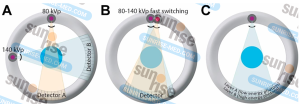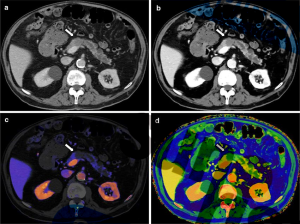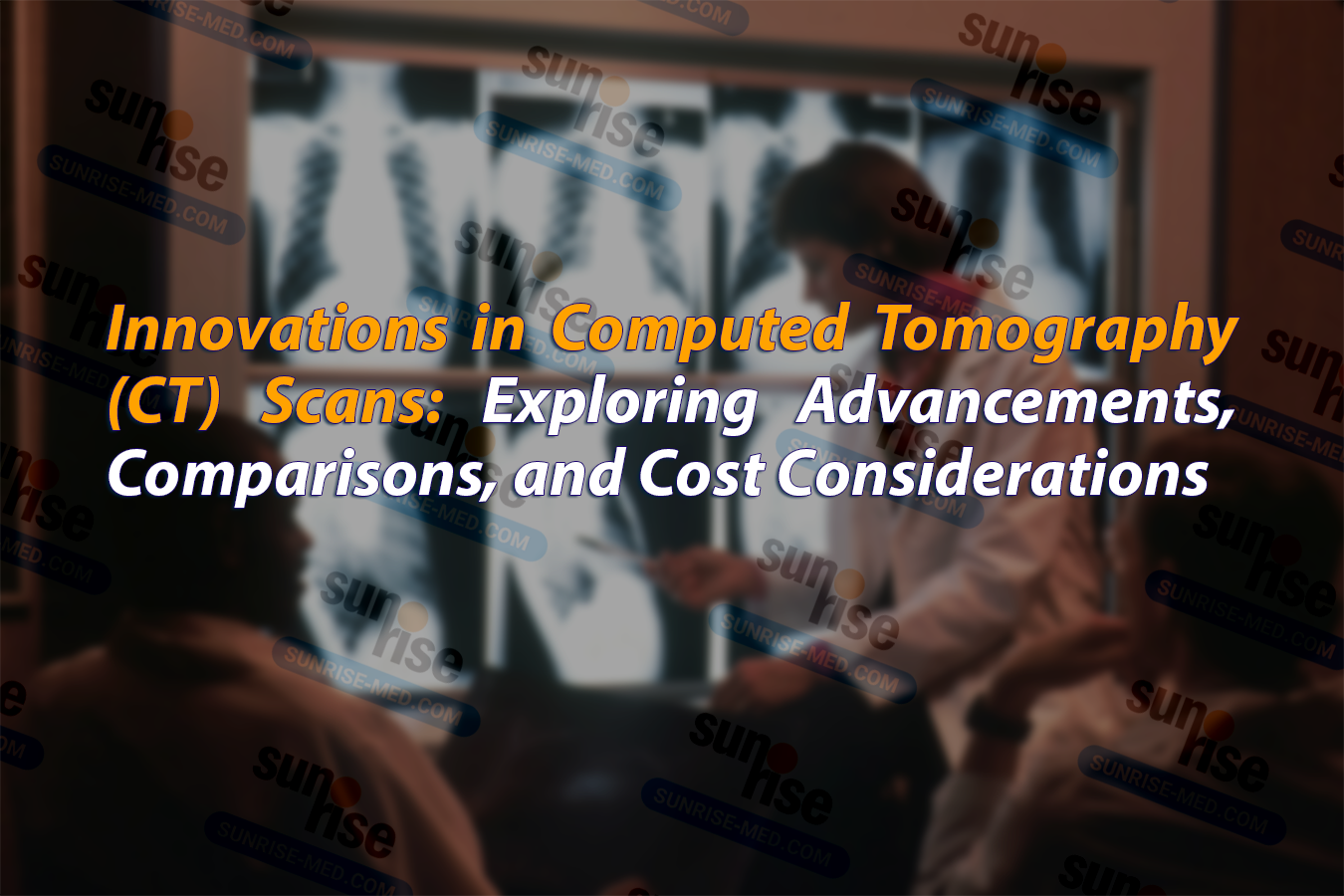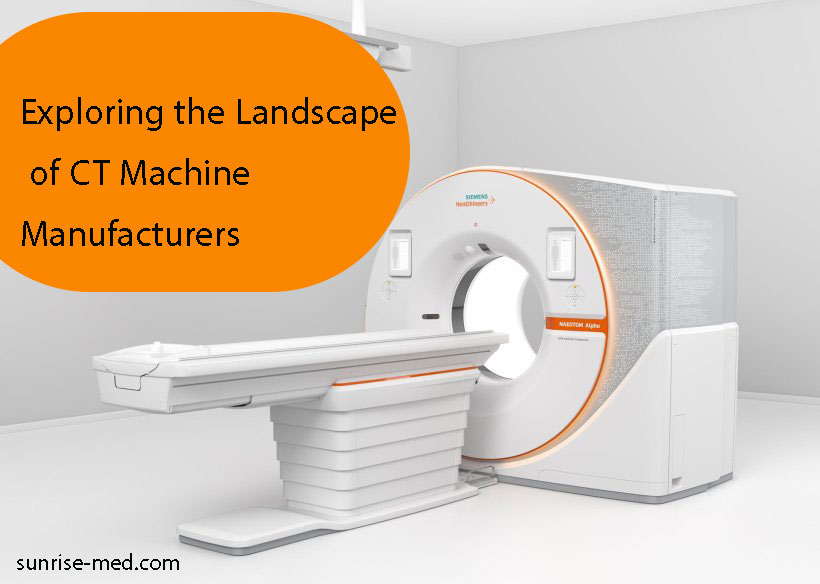Introduction:
Computed Tomography (CT) scans have become indispensable tools in medical imaging, providing detailed cross-sectional images of the body’s internal structures with remarkable clarity and precision. Over the years, significant advancements in CT technology have revolutionized diagnostic capabilities, enabling faster scan times, improved image quality, and expanded clinical applications. In this comprehensive analysis, we will explore the latest innovations in CT scans, examine their similarities with older systems, and delve into the cost considerations associated with acquiring and implementing these new technologies.
Advancements in CT Technology:

Dual-Energy CT (DECT):
Dual-Energy CT (DECT) represents a significant advancement in CT technology, allowing for the acquisition of images at two different energy levels simultaneously. By analyzing the attenuation differences between tissues at different energy levels, DECT enables enhanced tissue characterization, material differentiation, and artifact reduction. DECT is particularly valuable in oncology, cardiovascular imaging, and musculoskeletal imaging, where accurate tissue characterization and lesion detection are critical for diagnosis and treatment planning.
Spectral CT:
Spectral CT goes beyond conventional CT imaging by capturing and analyzing the full energy spectrum of X-ray photons passing through the body. This enables the quantification of tissue composition, identification of specific materials, and visualization of spectral information within the imaged anatomy. Spectral CT technology offers valuable insights into tissue perfusion, iodine distribution, and calcium scoring, enhancing diagnostic accuracy and facilitating personalized patient management strategies.
Iterative Reconstruction:
Iterative reconstruction algorithms represent a significant software advancement in CT image reconstruction, offering improved noise reduction, artifact suppression, and image quality compared to traditional filtered back projection (FBP) techniques. By iteratively refining the reconstruction process based on statistical models and prior knowledge, iterative reconstruction algorithms can produce higher-resolution images with reduced radiation dose and fewer image artifacts. This enables clinicians to achieve diagnostic image quality while minimizing patient exposure to ionizing radiation, particularly in pediatric and oncology imaging.
Wide-Area Detectors:
Wide-area detectors have revolutionized CT scanning by increasing the coverage area and volume imaged per rotation, thereby reducing scan times and improving workflow efficiency. With wider detector arrays, CT scanners can acquire larger anatomical volumes in a single gantry rotation, enabling rapid whole-body imaging and dynamic studies with high temporal resolution. Wide-area detectors are particularly beneficial in trauma imaging, emergency radiology, and interventional CT procedures, where rapid image acquisition and comprehensive coverage are essential for timely diagnosis and treatment.
Artificial Intelligence (AI) in CT:
Artificial intelligence (AI) and machine learning algorithms are increasingly being integrated into CT scanners and post-processing software to automate image analysis, enhance diagnostic accuracy, and improve workflow efficiency. AI algorithms can assist radiologists in image interpretation, lesion detection, and quantitative analysis by analyzing large datasets and identifying patterns or abnormalities that may not be readily apparent. Additionally, AI-driven image reconstruction techniques can reduce noise, optimize image quality, and improve lesion conspicuity, leading to more confident diagnoses and streamlined radiology workflows.
Similarities between New and Old CT Technologies:

While new CT technologies offer advanced features and capabilities, they share several fundamental similarities with older systems:
X-ray Source and Detectors:
Both old and new CT systems utilize X-ray tubes and detectors to generate and detect X-ray photons passing through the patient’s body. The basic principles of X-ray generation, attenuation, and detection remain consistent across different generations of CT scanners, ensuring reliable and reproducible imaging results. While newer CT systems may incorporate improvements in X-ray tube design, detector technology, and dose modulation techniques, the underlying physics of X-ray imaging remain unchanged.
Image Reconstruction and Display:
The process of reconstructing raw CT projection data into cross-sectional images and displaying them on a monitor follows similar principles across different CT systems. Both old and new CT scanners use iterative algorithms or filtered back projection (FBP) techniques to reconstruct images from raw data acquired during the scan. The reconstructed images are then displayed in grayscale or color on a computer monitor, allowing radiologists to visualize anatomical structures, identify abnormalities, and make diagnostic interpretations. While newer CT systems may employ advanced reconstruction algorithms or display technologies, the basic workflow for image reconstruction and interpretation remains consistent.
Clinical Applications and Protocols:
CT imaging protocols and clinical applications are consistent across different CT systems, regardless of their age or technological sophistication. Radiologists utilize similar imaging protocols, such as contrast-enhanced studies, multi-phase acquisitions, and multi-planar reconstructions, to evaluate various anatomical regions and clinical conditions. Similarly, the indications for CT imaging, such as trauma assessment, oncologic staging, and vascular imaging, remain unchanged across different generations of CT scanners. While new CT technologies may offer additional imaging capabilities or specialized protocols, the fundamental principles of clinical applications and imaging protocols remain consistent.
Regulatory Compliance and Safety:
Both old and new CT systems are subject to regulatory requirements and safety standards governing radiation dose management, image quality assurance, and patient safety. Healthcare facilities must adhere to guidelines established by regulatory bodies, such as the U.S. Food and Drug Administration (FDA) and the American College of Radiology (ACR), to ensure compliance with safety regulations and quality standards. While newer CT systems may incorporate dose reduction techniques, dose monitoring tools, and advanced safety features, the overarching goal of optimizing patient care and minimizing radiation exposure remains unchanged.
Cost Considerations of New CT Technologies:
![]()
The cost of acquiring and implementing new CT technologies can vary significantly depending on several factors, including the type of system, detector configuration, software features, and vendor-specific pricing. Here are some cost considerations associated with new CT technologies:
Equipment Cost:
The upfront cost of purchasing a new CT scanner is a significant investment for healthcare facilities, with prices ranging from hundreds of thousands to millions of dollars, depending on the system’s specifications and capabilities. High-end CT systems with advanced features, such as dual-energy imaging, spectral CT, or wide-area detectors, generally command higher prices than standard diagnostic scanners. Additionally, the cost of optional accessories, such as specialized coils, contrast injectors, or image processing software, can further increase the overall equipment cost.
Installation and Site Preparation:
The installation of a new CT scanner requires careful planning, site preparation, and logistical coordination to ensure optimal performance and safety. Healthcare facilities may incur additional expenses for site renovations, shielding requirements, and infrastructure upgrades to accommodate the new CT system. Installation costs can vary depending on the complexity of the project, facility-specific requirements, and regulatory compliance standards. Additionally, healthcare facilities may need to budget for training programs and certification courses for radiology staff to ensure proficiency in operating the new CT scanner.
Service and Maintenance Contracts:
Service and maintenance contracts are essential for ensuring the continued operation and performance of CT scanners over their lifecycle. Healthcare facilities typically enter into service agreements with equipment vendors or third-party service providers to receive ongoing maintenance, technical support, and access to software updates. The cost of service contracts varies depending on the level of coverage, response time, and service provider reputation. Additionally, facilities may incur additional expenses for spare parts, consumables, and system upgrades during the service contract period.
Radiation Safety and Compliance:
Healthcare facilities must invest in radiation safety measures and compliance programs to ensure the safe operation of CT scanners and minimize patient and staff exposure to ionizing radiation. This may include implementing dose monitoring systems, dose reduction techniques, and quality assurance programs to optimize imaging protocols and ensure compliance with regulatory requirements. The cost of radiation safety
and compliance initiatives may include training programs, dosimetry equipment, and regulatory compliance audits, depending on the facility’s size and complexity.
Total Cost of Ownership (TCO):
In addition to upfront equipment costs, healthcare facilities must consider the total cost of ownership (TCO) when evaluating new CT technologies. TCO encompasses all expenses associated with acquiring, operating, and maintaining the CT scanner over its expected lifespan. This includes equipment depreciation, energy consumption, service contracts, training, and potential upgrades or replacements. By calculating the TCO, healthcare administrators can make informed decisions about budget allocation, resource planning, and long-term financial sustainability.
Introduction to Toshiba Aquilion Prime CT Scan:
The Toshiba Aquilion Prime CT scanner is a state-of-the-art imaging system designed to deliver exceptional performance, diagnostic accuracy, and patient comfort in a wide range of clinical settings. Developed by Canon Medical Systems (formerly Toshiba Medical Systems), the Aquilion Prime combines advanced imaging technologies with innovative design features to meet the evolving needs of healthcare providers and patients. Let’s explore the key features and capabilities of the Toshiba Aquilion Prime CT scanner.
Multi-Detector Row Technology:
The Aquilion Prime features multi-detector row technology, allowing for the simultaneous acquisition of multiple image slices during a single rotation of the X-ray tube and detector array. With up to 160 detector rows, the system can generate high-resolution images with exceptional speed and efficiency, enabling rapid scan times and reduced patient exposure to radiation. This advanced technology is particularly beneficial for imaging complex anatomies, performing dynamic studies, and optimizing workflow in busy clinical environments.
Adaptive Iterative Dose Reduction (AIDR):
Toshiba’s Adaptive Iterative Dose Reduction (AIDR) algorithm is integrated into the Aquilion Prime CT scanner to optimize image quality while minimizing patient radiation dose. AIDR utilizes iterative reconstruction techniques to reduce noise, artifacts, and image degradation caused by low-dose scanning protocols. By iteratively refining image reconstruction based on statistical models and noise characteristics, AIDR enhances image sharpness, contrast resolution, and diagnostic confidence without compromising patient safety or image quality.
SUREExposure Pediatric:
The Aquilion Prime CT scanner incorporates SUREExposure Pediatric technology, designed specifically to address the unique imaging needs of pediatric patients. SUREExposure Pediatric automatically adjusts exposure parameters based on patient size, age, and clinical indication, ensuring optimal image quality while minimizing radiation dose. This pediatric-specific dose optimization feature enhances patient safety and comfort, particularly for children undergoing CT imaging procedures.
Quantum Detector Technology:
Toshiba’s Quantum detector technology is at the heart of the Aquilion Prime CT scanner, delivering exceptional image quality and sensitivity for a wide range of clinical applications. The Quantum detector features high spatial resolution, low noise characteristics, and fast signal readout capabilities, enabling accurate visualization of anatomical structures and pathological findings. With its advanced photon-counting technology and large detector coverage, the Quantum detector enhances diagnostic accuracy and confidence in clinical practice.
Versatile Clinical Applications:
The Toshiba Aquilion Prime CT scanner is well-suited for a broad spectrum of clinical applications, including routine diagnostic imaging, oncology staging, trauma assessment, and interventional procedures. Its versatility and advanced imaging capabilities make it suitable for imaging various anatomical regions, such as the brain, chest, abdomen, pelvis, and musculoskeletal system. Additionally, the system supports advanced imaging techniques, such as CT angiography, perfusion imaging, cardiac CT, and dual-energy CT, enabling comprehensive patient evaluation and personalized treatment planning.
In summary, the Toshiba Aquilion Prime CT scanner represents a leading-edge solution for high-performance CT imaging, combining advanced technology, dose optimization features, and versatile clinical applications to meet the diverse needs of healthcare providers and patients. With its multi-detector row design, AIDR dose reduction algorithm, pediatric-specific imaging capabilities, Quantum detector technology, and broad clinical utility, the Aquilion Prime sets a new standard for excellence in CT imaging.
Conclusion:
Innovations in computed tomography (CT) technology have transformed diagnostic imaging, enabling clinicians to visualize anatomical structures, detect abnormalities, and guide therapeutic interventions with unprecedented precision and accuracy. From dual-energy CT (DECT) and spectral imaging to iterative reconstruction and wide-area detectors, these advancements offer valuable insights into tissue composition, perfusion dynamics, and disease pathophysiology.
Despite their differences in features and capabilities, new CT technologies share fundamental similarities with older systems, including X-ray source and detector design, image reconstruction principles, and clinical applications. By building upon established foundations and leveraging technological advancements, new CT systems enhance diagnostic capabilities, improve patient care, and drive innovation in healthcare delivery.
However, the adoption of new CT technologies entails significant cost considerations for healthcare facilities, including equipment procurement, installation, service contracts, and radiation safety compliance. By carefully evaluating the upfront and long-term costs associated with acquiring and implementing new CT systems, healthcare administrators can make informed decisions about technology investments, optimize resource allocation, and ensure high-quality patient care delivery.



